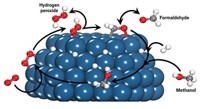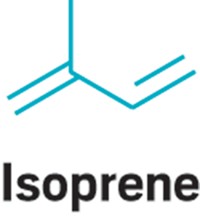Advertisement
Grab your lab coat. Let's get started
Welcome!
Welcome!
Create an account below to get 6 C&EN articles per month, receive newsletters and more - all free.
It seems this is your first time logging in online. Please enter the following information to continue.
As an ACS member you automatically get access to this site. All we need is few more details to create your reading experience.
Not you? Sign in with a different account.
Not you? Sign in with a different account.
ERROR 1
ERROR 1
ERROR 2
ERROR 2
ERROR 2
ERROR 2
ERROR 2
Password and Confirm password must match.
If you have an ACS member number, please enter it here so we can link this account to your membership. (optional)
ERROR 2
ACS values your privacy. By submitting your information, you are gaining access to C&EN and subscribing to our weekly newsletter. We use the information you provide to make your reading experience better, and we will never sell your data to third party members.
Analytical Chemistry
Chirality's Atmospheric Role
Oxidation reactions of chiral organic molecules with ozone on aerosol particles in the atmosphere depend on the molecules’ stereochemistry
by Mitch Jacoby
September 28, 2009
| A version of this story appeared in
Volume 87, Issue 39

The probability that chiral organic molecules coating aerosol particles will undergo atmospheric reactions with ozone depends on the molecules' stereochemistry, according to a study in the Journal of the American Chemical Society (DOI: 10.1021/ja904206t). Some man-made and natural components of the atmosphere are surface-active and chiral. Yet until now the role of enantioselectivity in atmospheric heterogeneous oxidation and its effect on the composition of the atmosphere have not been studied. Northwestern University's Grace Y. Stokes, Franz M. Geiger, and coworkers modeled those processes, which are thought to be related to cloud formation, by preparing surface-bound chiral olefins and treating them with ozone in a concentration range selected to model the troposphere. Specifically, the researchers adsorbed quinuclidine diastereomers onto silica surfaces and probed these model compounds' rates of ozonolysis with a surface-sensitive spectroscopy method. The group found that diastereomers that orient their reactive C=C bonds away from the surface undergo surface ozonolysis twice as fast as molecules with olefin groups oriented toward the surface. Therefore, chiral organic molecules could serve to distinguish between anthropogenic and biogenic sources of certain organic carbon emissions, the team proposes.




Join the conversation
Contact the reporter
Submit a Letter to the Editor for publication
Engage with us on Twitter